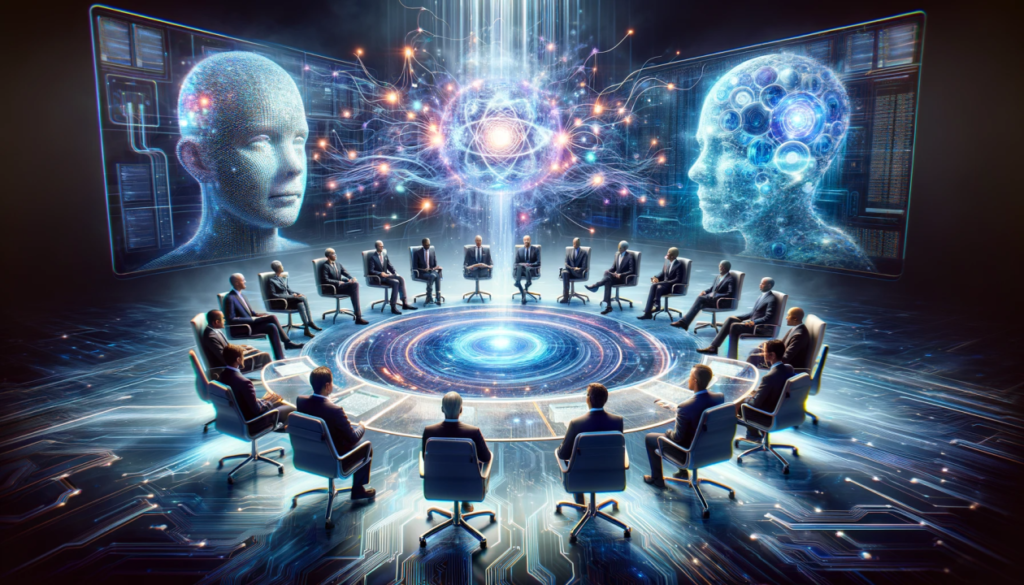OpenAI has announced the formation of a new safety committee, an initiative that comes just weeks after the departure of key executives raised questions about the company’s commitment to addressing the risks associated with artificial intelligence. This move underscores the company’s efforts to bolster its safety protocols at a time when it is preparing to train its next AI model, anticipated to surpass the capabilities of the GPT-4 system currently powering ChatGPT.
The new committee includes OpenAI CEO Sam Altman, along with board members Bret Taylor, Adam D’Angelo, and Nicole Seligman. Also part of the committee are chief scientist Jakub Pachocki, Aleksander Madry who leads OpenAI’s preparedness team, Lilian Weng who heads safety systems, Matt Knight the head of security, and John Schulman who leads alignment science. These individuals are tasked with evaluating OpenAI’s safety processes and safeguards over the next 90 days.
OpenAI’s decision to staff the committee primarily with company insiders has sparked debate. Critics argue that this approach may lack the necessary objectivity, while proponents believe it ensures that those most familiar with the company’s operations are involved in critical safety decisions. To address these concerns, OpenAI has stated that it will consult external experts during the review period. These experts include notable figures like Rob Joyce, a former National Security Agency official, and John Carlin, a former senior Justice Department official.
Over the next three months, the committee will rigorously scrutinize OpenAI’s existing AI safety protocols. Their goal is to develop recommendations for potential enhancements or additions to these safeguards. After completing this review, the committee’s findings will be presented to the full OpenAI board for consideration. OpenAI has committed to publicly sharing an update on any adopted recommendations, aiming to maintain transparency and accountability.
This committee’s formation follows a series of executive departures that have highlighted internal tensions and raised concerns about the company’s safety priorities. Earlier this month, OpenAI dissolved its “superalignment” team, a group dedicated to addressing long-term AI risks. The disbanding of this team has been particularly controversial, with former members voicing strong criticisms.
Jan Leike, who co-led the superalignment team, resigned and publicly criticized OpenAI in a series of posts on X, the platform previously known as Twitter. Leike expressed frustration over what he perceived as the company’s focus on developing “shiny new products” at the expense of crucial safety work. He noted that his team had been struggling against internal resistance, stating, “Over the past few months, my team has been sailing against the wind.”
The controversy surrounding OpenAI extends beyond internal issues. The company recently faced backlash over an AI voice that some claimed closely mimicked actress Scarlett Johansson. Although OpenAI denied attempting to impersonate Johansson, the incident raised significant ethical concerns and questions about the robustness of their safeguards.
These challenges have underscored the need for OpenAI to reaffirm its commitment to AI safety. The formation of the new safety committee is a step in this direction, but its effectiveness will be closely scrutinized. The inclusion of company insiders on the committee, particularly those deeply involved in the company’s operations, has been a point of contention. Critics argue that this could compromise the objectivity of the safety evaluations. However, by engaging external experts and incorporating their insights, OpenAI hopes to mitigate these concerns.
The next 90 days will be crucial for OpenAI. The outcomes of the committee’s review and the subsequent actions taken by the company will likely have significant implications for its future and reputation. The balance between rapid innovation and the need for robust safety measures is delicate, and how OpenAI navigates this will be closely watched by industry insiders and the broader public.
If you like the article please follow on THE UBJ.
